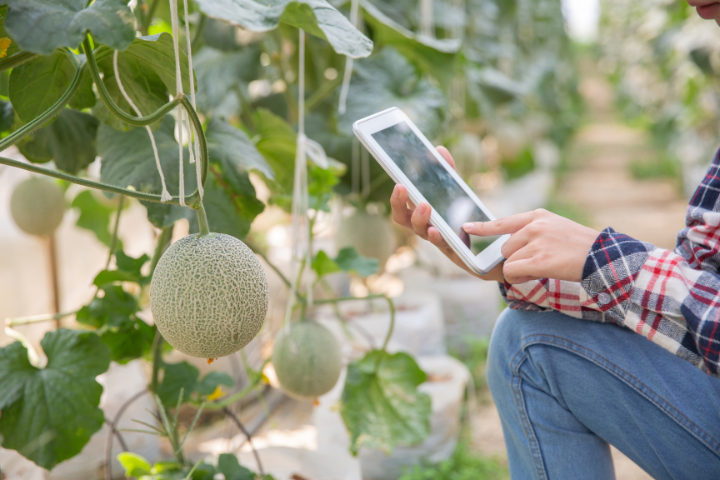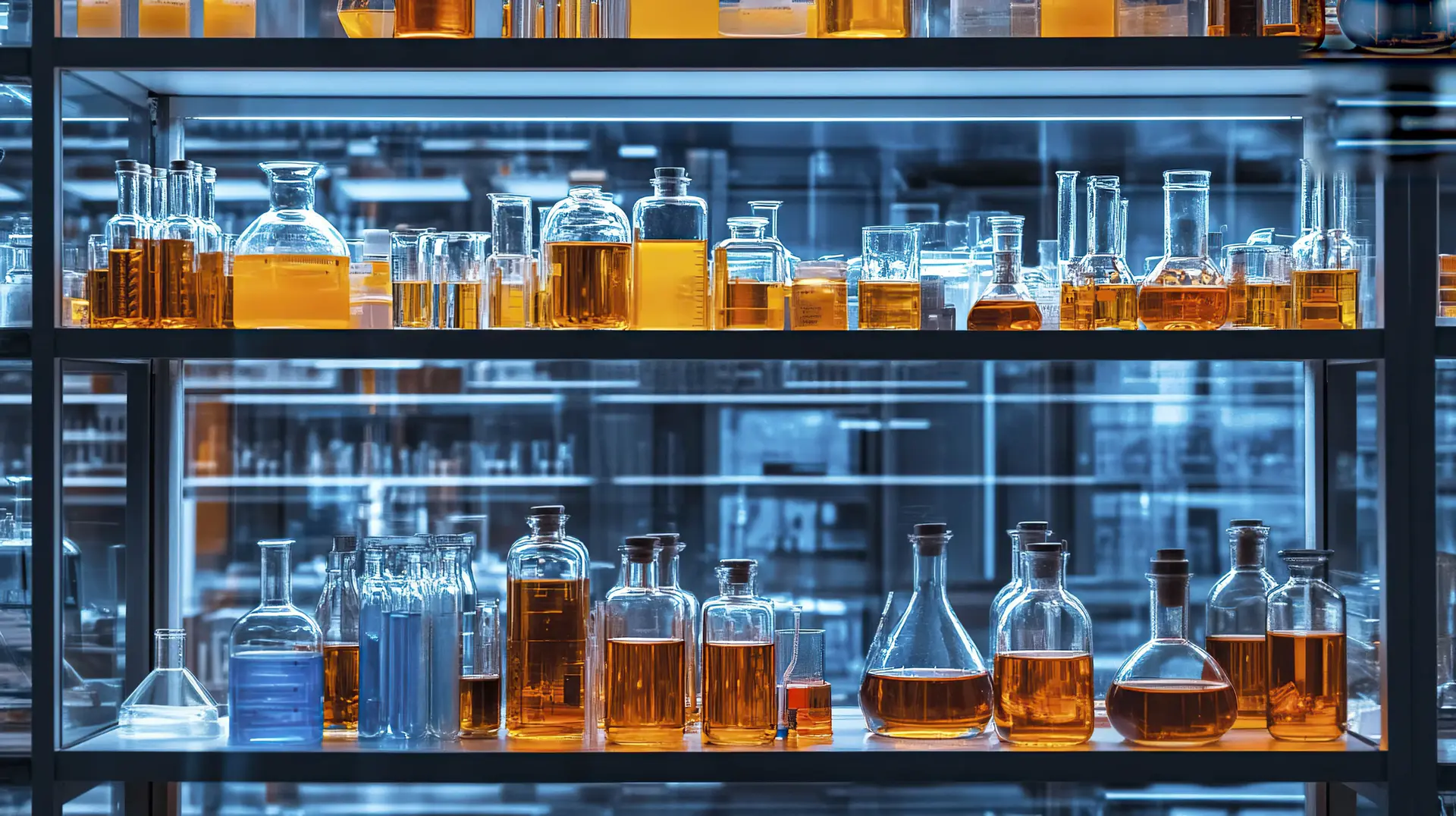From Farm to Fork
Opportunities for digital transformation in agri-food systems include better monitoring and managing soil, climate, and genetic resources and eliminating widespread informational inequality between the people involved in agricultural products’ production, distribution, and consumption. It’s a springboard for better urban, peri-urban, and rural agricultural development that also benefits the environment.
Everyone throughout the agricultural value chain could gain something from the advent of digital agri-food technologies. In the present context, digital transformation consulting is how all big and small players can transform data into value.
Do you know
According to research by the Business and Sustainable Development Commission, there is a market opportunity worth a total of US$2.3 trillion for businesses that develop business models to address the many problems plaguing the international food system.

Digital Technology Transforming Agri-food Systems
The agricultural sector is undoubtedly changing. The industry has greatly profited from technological advancements that have allowed for complete command of all aspects. The agri-food system is being transformed by technology in several ways. Here are examples of some of them:
Smart Irrigation
There has recently been much talk about controlling water waste in agricultural fields. The reason is that irrigation uses up to 70% of all available freshwater in the modern world. Inefficient usage methods and agricultural runoff also contribute to the loss of this water.
Smart irrigation infrastructure offers a solution through an Internet of Things (IoT) network or system that monitors and controls water use in fields. Because of advancements in agriculture technology, farmers now have access to a central hub that compiles information on irrigation systems to help them make more informed decisions. Considering elements like scheduling, minimizing waste, and assessing soil water levels can help producers achieve optimal watering needs. Smart irrigation reduces potential mistakes because it relies on automated technologies like smart pumps.
Smart irrigation, made possible by technological advancements in agriculture, helps farmers save water without sacrificing crop quality.

Industrial Farming Automation
Automation in agriculture, sometimes known as “smart farming,” is a set of tools that help farmers produce more while saving time and effort. Despite the novelty of these technologies, increasingly established farms are adopting automated farming methods.
Technological innovations, such as automation, robots, artificial intelligence, and machine learning systems, have profoundly impacted modern agriculture. Some of the most common examples of digital technologies in agriculture are robotics, totally autonomous mowers, planting, and trimming. The primary goal of agricultural automation equipment is to perform mundane tasks. A growing global population, a lack of available farm labor, and shifting consumer preferences are all challenges that can be mitigated using agricultural farming automation technologies.
Automation in agricultural production has several benefits since it helps farmers deal with issues including consumer preferences, labor shortages, and environmental impacts.
Crop and Livestock Surveillance
Farmers can watch their crops and livestock in various ways if they are linked. Increased yields and more precise shortage forecasting and identification are possible outcomes of including meteorological data in agricultural operations.
For example, wireless LAN connectivity between soil-monitoring sensors and sprinkler controllers could lead to more accurate watering and fertilizer application. By providing images from far-flung farms, IoT technology lets farmers get early warnings of any pests or diseases threatening their crops. By keeping an eye on things like fruit color, size, etc., farmers may maximize their crop’s profit potential and enhance their income.
Avoiding illness outbreaks and being aware of early warning signals are also important when managing animals. Microchips, wearable gadgets, and the widely used ear tag help farmers keep track of their animals’ vitals, such as temperature and heart rate, allowing them to detect illnesses early and prevent widespread spread. Ear tags’ location-tracking capabilities enable livestock farms to monitor animals in real-time.
Incorporating sensor devices can automate airflow or heat adjustments in stables, improving the living circumstances of cattle, which should be a top priority for all industries due to their environmental impact.
Even though NB-IoT and 5G provide formidable competition in finding solutions to the problems, IoT technologies still need to be investigated because they cannot support frequency and interconnection concerns.
Agricultural Applications
Technology’s disruptive nature in agriculture has compelled farmers to gradually adopt new methods that take advantage of this rapidly developing field of study. Smartphones have demonstrated their efficacy and scalability even in more conventional fields, like farming.
Most of the new technologies for agriculture and food involve using electronics or mobile apps to replace or make work easier for people. In agriculture, digital applications are changing how land is fertilized and harvested in the palm of your hand. It has also prompted farmers to participate actively in the various food production and delivery phases.
Despite the current limitations of the solutions, users of smart farming technology choose a User Interface that is both highly adaptable and exceedingly intuitive. Numerous agri-related apps, such as seed hubs, crop insurance, crop calendars, agro-trading platforms, weather forecasts, etc., have entered the market in recent years.

UAVs, Drones, and Satellite Imagery
Images captured by UAVs, programmable drones, and satellite imagery let farmers monitor fields, track weather patterns, assess irrigation needs, and irrigate crops. Drones equipped with vision sensors may monitor the environment, flagging when it’s time to water the crops or spray the insecticides. While drones have been used in agriculture for irrigating crops, the newest models of Agri tech can also inspect crops and animals across vast areas, reporting findings in real-time to other parts of the system. Drones can also sow seeds in inaccessible or remote regions, reducing the need for human labor and related expenses.
Photographic data can help farmers plan for production more efficiently and accurately by allowing them to forecast crop yields. With integrative maps, farmers may save much money and time on labor and time-consuming tasks.
Global Positioning System (GPS)
Many farmers now use GPS devices. For example, contemporary farms utilize GPS tracking to monitor crop health. Using GPS, keeping tabs on crop yields from a single farm, and recording harvest assessments over time are easy. These advancements are helpful because they allow farmers to make decisions based on their best judgment.
The yield map is the most well-liked method of documentation, as it can be used to provide an annual review of all operations. These maps are quite helpful since they may show you a great deal of information about any subject, such as how effective your farm’s drainage canals are.
Monitoring the Climate and the Weather
Accuracy in computerized weather forecasting is increasing now. Because of climate change and more unpredictable weather, farmers now face more uncertainty. Farmers can keep a closer eye on their crops and fields with the help of technologies that predict the weather.
If farmers are aware of an approaching storm, they may harvest a crop a day early to reduce their losses. Farmers can exert more influence over their yields if they regulate their suppliers. If rainfall increases, they can also adjust the water flow in their irrigation canals to reduce water use in the fight against dampness.
Dedicated digital weather systems can provide similar services to farmers via mobile apps and other portable farm technologies. Farmers may be better equipped to protect their harvests from natural disasters like storms and snow with the help of agricultural food technology.

The Impact of Digital Agriculture
Increased Efficiency
Farmers that have embraced technological advancements have moved away from more labor-intensive and inefficient methods in favor of those that save both time and money. With the introduction of Agriculture 4.0, farmers now have access to a vast array of farm automation tools and data management systems, allowing them to maximize resource utilization and agricultural output. More sustainable and resilient agri-food systems worldwide can be achieved with the help of digital agriculture, which in turn may help management better align their organizational strategies with the Sustainable Development Goals.
Improved Farmer Livelihood
Understanding crop science and enhancing agronomic techniques to improve yields are greatly aided by digital farming. Large and medium-sized businesses can more easily transfer a tried-and-tested package of practices to farmers, especially in developing regions, to encourage adopting more scientific farming practices. Using agri-tech can increase a farm’s output, and losses caused by factors like pests, illnesses, and extreme weather can be mitigated. Consequently, producers should expect higher yields and greater revenues after each season.
Intelligent Decision-making
Adopting a digital agriculture system has several advantages, but one of the most notable is its access to precise data in near-real time. Producers can improve farm operations and resource management using information from farm and satellite imaging-based data on productivity under a wide range of growth circumstances. Information obtained at various stages in the distribution chain also helps farmers anticipate consumer demands and adjust agricultural output accordingly. These findings can be used by businesses and governments alike to reduce losses, optimize agricultural management, and reduce food waste.
Stronger Competitive Connectivity
As a result of the virtual integration of many stakeholders made possible by digital solutions, farmers and other agricultural producers now have easier access to a wider range of inputs, including agribusinesses, banks, and commodities dealers. This is especially helpful for smallholder farmers, who often need help with more information about commodity pricing and other crucial market data, an inability to negotiate payment terms, and a need for more available buyers.
Effective Policymaking and Execution
Rapid mobile and internet access growth in developing countries has raised the profile of millions of farmers on the radar of policymakers. Thanks to technological advancements, a national database containing information about farmers from every state or country is now feasible. By registering their information, farmers will be better able to get updates on the agriculture-related programs that will help them the most. Lending and insurance firms can better prepare for and respond to potential hazards with the help of seasonal data on crop yield and plot performance.

Digital agriculture is fostering unprecedented, all-encompassing development in the industry, from upgrading farming practices to improving value for all ecosystem players to increasing the availability of healthy food worldwide. Using the information made available by technological advancements, manufacturers can better control inventory levels while adopting environmentally friendly procedures. The global R&D teams are also empowered by the availability of rich data from various stages of food production and distribution, allowing them to improve operational efficiency on and off the field and create agri-inputs that can meet today’s problems. Now that the groundwork has been laid for a flood of low-cost advancements in the industry, we can confidently say that the most exciting times are still to come.






